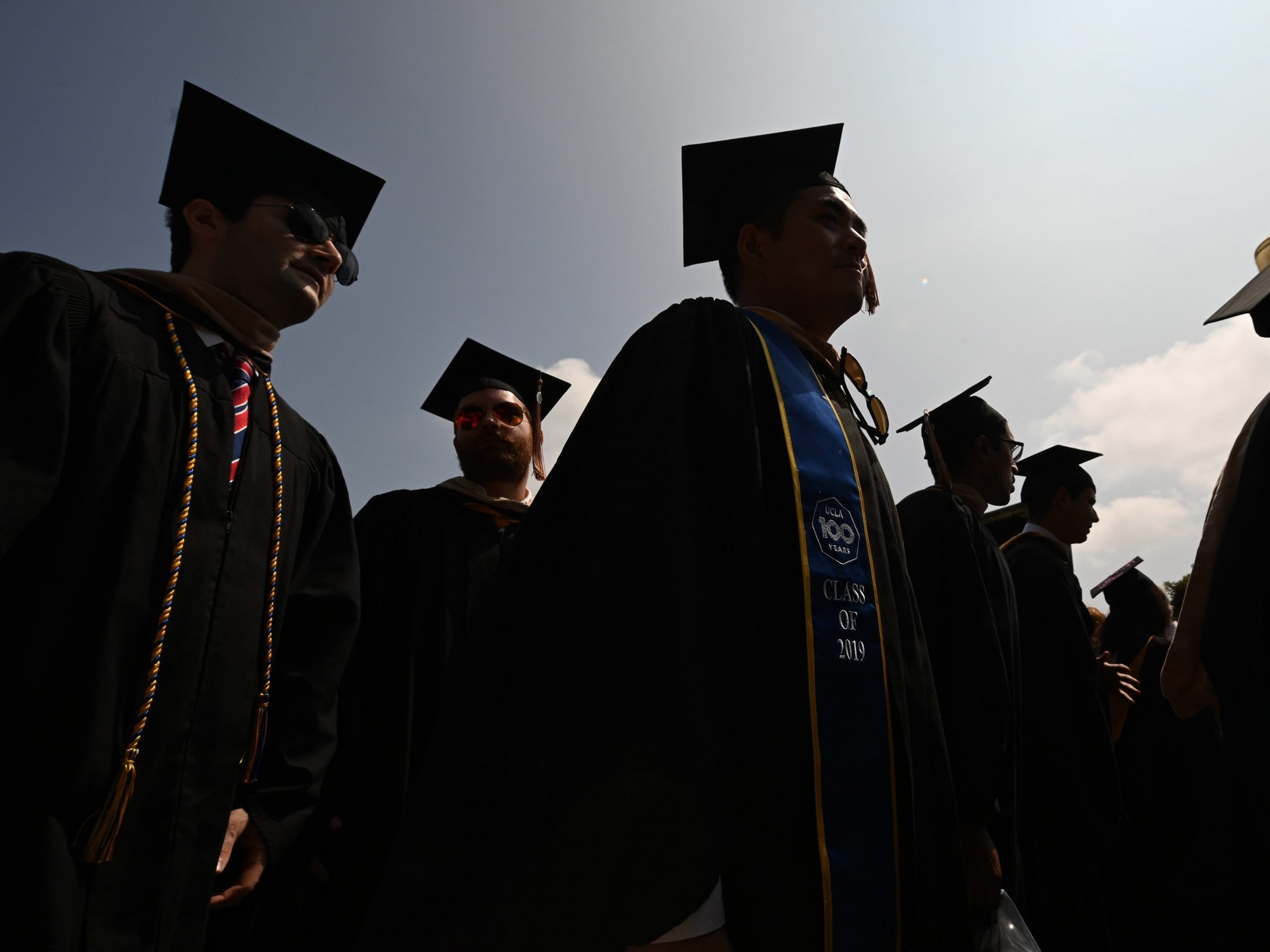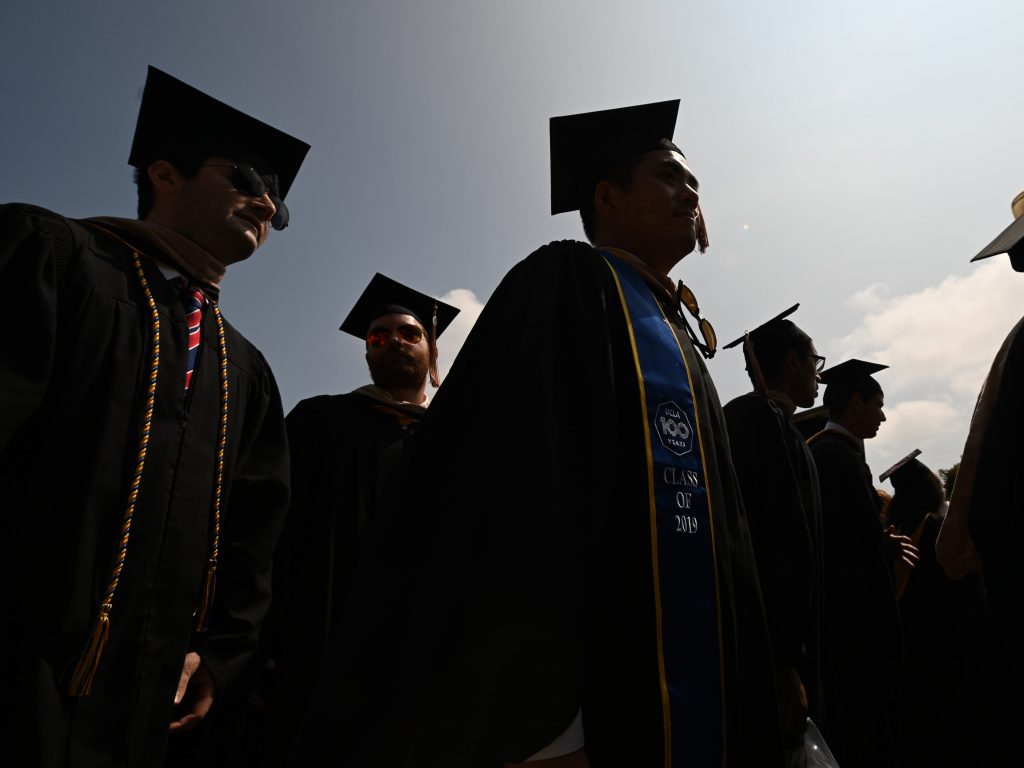
ROBYN BECK/AFP via Getty Images
- The Bipartisan Policy Center released a report analyzing how policy decisions affect the student debt crisis.
- It highlighted reasons for the surging crisis, such as lack of accountability and unchecked lending.
- Some Democrats believe cancelling student debt would be a significant stimulus for the US economy.
The student debt crisis has surged 144% over the past decade, forcing 45 million Americans to shoulder $1.7 trillion in loans. Rising tuition costs and unchecked borrowing aren't helping.
The Bipartisan Policy Center – a DC-based think tank – released a report on Wednesday examining how student loans impact the federal budget and economic outlook for the US. It explained that while the federal student debt portfolio in 2007 was $642 billion, it ballooned 144% to $1.56 trillion by 2020, outpacing the growth in the number of borrowers, which increased from 28 million to 43 million over the same time period.
If this trend continues, the report said, both borrowers and taxpayers are facing bleak economic futures should the student-loan industry continue to hand out loans that borrowers cannot afford to pay back.
"The student loan system is saddling millions of students and families with debt that harms their long-term financial security and well-being," Kevin Miller, BPC associate director of higher education, said in a statement. "And when borrowers cannot repay their loans, the federal government and taxpayers foot the bill. We need reforms to protect students as well as taxpayers from the negative consequences of excessive student debt."
The report highlighted four reasons why the student debt crisis has grown to $1.7 trillion:
- Declining state support for higher education. Due to recent tax cuts, state funding for colleges has declined, causing those schools to raise tuition to fill the gaps. This has also eroded the value of Pell Grants, given that students were using more of those scholarships to cover those rising expenses.
- Easy access to federal loans means schools can raise tuition without losing prospective students. Federal loans are simply too available. As federal lending limits have risen to account for increasing tuition costs, students take on more debt and are less likely to notice that tuition is getting more expensive.
- Parent PLUS loans and Grad PLUS loans are given out way too easily. The only borrowing limit for PLUS loans - which allow parents to take on federal debt to pay for their children's education - is the cost of attendance for a school, allowing borrowers to take on debt regardless of their ability to pay it back. PLUS loans also have the highest interest rate of all federal loans, making them very difficult to pay back.
- Poor-quality institutions, like fraudulent for-profits, continue to receive federal aid even if students cannot pay off the debt, leaving taxpayers on the hook. A number of institutions have come under fire over the past decade for leading students to take on more debt than they can pay off, and when some of those schools shut down, taxpayers had to pay the costs.
As the report noted, unchecked borrowing is a major contributing factor to the growth of the student debt crisis. Insider has spoken to borrowers who are grateful to have gained an education, or to have been able to send their kids to school, but they wish taking out a loan hadn't been so easy in the first place.
Reid Clark, for example, is a 57-year-old parent who is now saddled with $550,000 in parent PLUS loans because he wanted to ensure his children would receive an education.
"At the very onset of the whole process is where the problems begin," Clark previously told Insider, referring to the unchecked amount parents can borrow years in advance. "They really make it challenging to educate your kids and pay for it."
Jeff O'Kelley, another parent PLUS borrower, told Insider the process to get a loan "was too easy, and it shouldn't have been."
"I wish there were more constraints on it, or something that might have forced me to think twice about it or make a different decision," O'Kelley said.
The Bipartisan Policy Center did not advocate for student debt cancellation to solve the problem, but rather, reforms to the system to increase accountability and prevent unchecked borrowing. The economic impacts of debt cancellation are widely disputed - the Committee for a Responsible Budget argued that partial debt cancellation is poor economic stimulus because it will benefit higher earners who are more likely to save and less likely to spend.
But the left-leaning Roosevelt Institute argued the opposite: it found that Massachusetts Sen. Elizabeth Warren's plan to cancel $50,000 in student-debt per borrower will stimulate the economy and benefit low-earners the most, and many Democratic lawmakers believe the same.
"America has a consumer-driven economy," Warren previously told Insider. "Knocking tens of millions of people out of being able to participate in that economy, taking money out of their pockets - money that they spend in local stores and money they spend to keep this economy going - is not helpful."
Do you have a story to share about student debt? Reach out to Ayelet Sheffey at [email protected].
